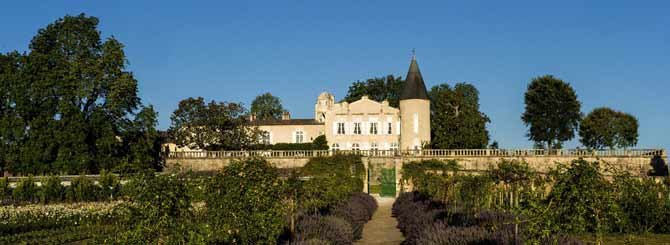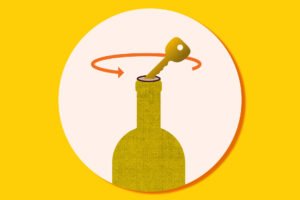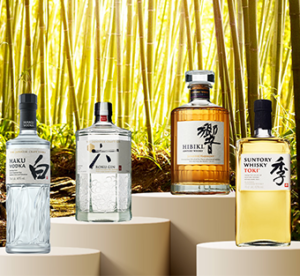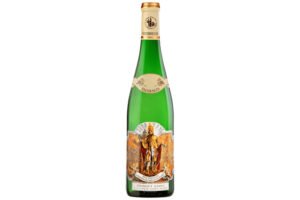Big Changes at Château Lafite

[ad_1]
Covid aside, it has been times of change for Domaines Baron de Rothschild and Château Lafite, as James Lawrence finds out.
The management at Château Lafite was completely shaken up in 2018; Baron Eric de Rothschild was succeeded by his daughter Saskia de Rothschild and CEO Christophe Salin gave up the mantle to LVMH’s Jean-Guillaume Prats. James Lawrence asks them both about the future of en primeur and selling Lafite in a post-Covid-19 world.
The 2019 primeur campaign took place against a backdrop of exceptionally challenging conditions that will arguably make or break the en primeur system. Are you happy with how things turned out?
JGP: Bordeaux has shown exceptional resilience during these difficult times. Since the phylloxera crisis in 1865, we have experienced so many troubles and crises. Covid-19 is one among many others. But it has been overcome with a successful en primeur campaign in Bordeaux. Our system of distribution has shown an exceptional capacity of reactivity, and the powers of the brands and châteaux have helped.
SR: That being said, Covid-19 has, of course, affected us and led us to concentrate on what couldn’t be stopped whether there was a virus or not: the natural cycle of our vineyards. That’s why we’ve done everything in our power to adapt our habits and still be able to tend to our vines and prepare the 2020 vintage.
The campaign has been organized at a distance – is this the future face of en primeur?
SR: It’s a strange feeling because so much about conducting a tasting is seeing the immediate reactions and feelings of the people in front of you. Once you get past this, I feel it is a very interesting trend, and we will probably continue to use this tool to share anecdotes about our wines with wider audiences. In times where we have to be more and more careful about our carbon footprint, it is an interesting solution to see less of the wine trade crossing the skies by plane continuously.
Can you help to clear something up – according to fine wine platform Liv-ex, the volumes of Lafite 2019 are reportedly down 50 percent on last year – why is that? The average yield in Pauillac in 2019 was 11 percent higher than 2018.
JGP: I will not comment on Live-ex, which is a privately owned platform. Their data can mislead consumers (in the same mold as Saturnalia) in our opinion.

© Marlène Awaad
| Chairman of Domaines Baron de Rothschild, Saskia de Rothschild, samples the wines.
What are your impressions of Lafite 2019?
SR: This is definitely a keeper. It’s a vintage that doesn’t walk into the room rolling its shoulders, but yet will be the one to leave a lifelong impression on you at the end of the night. Very pure, very classical, but with a new touch of modernity that comes from new Merlot plots that we’ve decided to add to the blend. It reminds me of the 2010, which is my absolute favorite, and that I still feel it is murderous to drink today as it hasn’t even started to show what it has to offer.
You’ve said in the past, Saskia, that you’re focused on making Lafite more accessible to younger consumers – why is that?
SR: We have to open our doors, share the stories of our wines, and show a different side to Lafite that is not all about men in suits and white-tablecloth restaurants. Also, sometimes people find the “château” idea pretentious and can be intimidated by the classifications or appellations (which can be complicated). So, education is the route to sharing that it’s actually all about enjoying the wines and learning to have fun with their differences.
Lafite has arguably been very judicious in its approach to pricing since 2015, with years like 2017 being discounted against the previous vintage and the highest price reaching €470. Do you expect this trend to continue and why has this strategy been put in place?
JGP: Each vintage is priced according to its quality, and, more importantly, according to the current market price of equivalent vintages. We have nevertheless made a special effort with the 2019 taking into consideration the stage the world is in.
Lafite was released at €396 per bottle ex-negociant, down 15.7 percent on the 2018 release (€470). Do you feel that is enough of a discount, considering the difficult market conditions, to invigorate demand?
JGP: Lafite is quoted today (June 24) at €480 per bottle by the négociants. This provides, therefore, an absolute demonstration that those merchants who bought initially some three weeks ago at €396 got an exceptional deal.
Fraud remains a major issue for fine wine brands, particularly in Asia. What steps is Lafite continuing to take to fight against this global problem?
JGP: This is a subject that we have been dealing with for a long time now. We have started compiling a database of information to help us fight against fraud. With the help of two laboratories we work with, we can analyze both the bottle and its contents from either or both analyses. Therefore, we can determine the difference between a real bottle of wine and a fake one. We can also compare the analyses with the data we have on wines that have never left the château.

© François Poincet
| The grand cellars of Château Lafite house hundreds of barrels.
When I asked Jean-Guillaume Prats about global warming in 2019, he said that overall it has benefited the Médoc, with warmer ripening conditions and stronger vintages. Do you agree Saskia?
SR: We can’t deny that we have recently seen good vintages such as 10, 16, 18, 19. But this doesn’t mean we are not extraordinarily wary – we’re still planning for the future. This is especially the case on the right bank for L’Evangile, where Merlot is the main varietal and has a great sensitivity to heat. This means we are planning to plant more Cabernet Franc and even Cabernet Sauvignon to make sure we build a balanced blend for our future vintages. It’s a long-term guessing game as these planting decisions will take full effect in a decade’s time, so let’s hope they are the right ones.
How has the digital sphere changed how Lafite does business?
SR: This has been an ongoing challenge for us as we mostly commercialize our wines via B2B, so the pipeline is long between us and the final customer. But, we now have tools to strengthen that relationship: tangible tastings we try to organize around the world to tell the stories of our wines in an approachable manner, as well as digital channels that allow us to connect and share moments of our lives in the vineyards.
Lafite now has a (via appointment) open door policy on estate visits. Surely allowing DtC sales would further strengthen your brand?
JGP: We will work exclusively for the time being with the Bordeaux trade.
Finally – are you worried about the severe decline of the hospitality sector?
JGP: It will, with no doubt, change the face of the markets and new players will emerge. But people will continue to dine out and consume wine. It is just a question of being able to wait for a few months for the situation to come back. Unfortunately, we know that some key players in the trade will greatly suffer due to the present world situation.
[ad_2]




